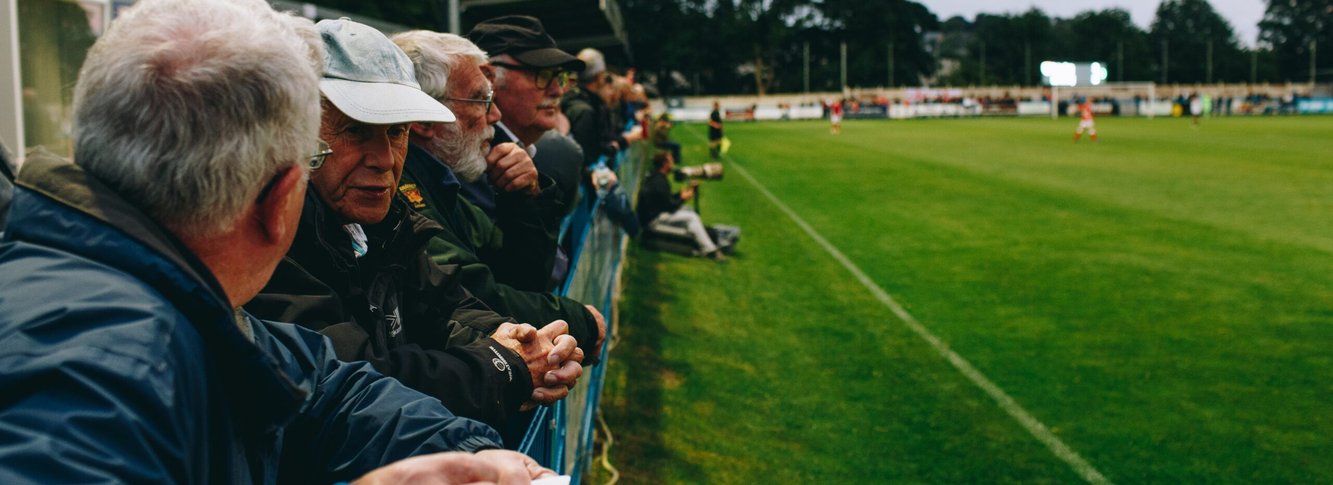| 6 mins read
What is the impact of Covid-19 on English professional football? To establish this, it’s necessary to analyse revenue streams in different divisions, the dependency that clubs have on them and how they have changed as a result of Covid-19. Key costs for football clubs, and possible funding sources from third parties and within the industry are also reviewed.
Football clubs generate most of their revenue from matchday attendance, broadcast and commercial sources, plus the more volatile area of player sales. Reliance on player sales increased during the pandemic and has become a central part of some clubs’ strategies.
Matchday revenues impacted by Covid-19
Ticket sales have been hit hardest by Covid-19. In total, matchday revenues generated £680m for Premier League clubs in 2018/19 (14 per cent of total income). Returning to empty stadiums meant a 20-25 per cent reduction in matchday revenues in 2019/20, a trend that will be amplified this season.
For clubs in the EFL and below, there is greater reliance on matchday income: Championship clubs generate up to 37 per cent of revenue from matchday, whilst for Leagues One and Two the figure can be more than half of total income.
Broadcast deals hit
The Premier League broadcast deal is worth over £3bn annually. Sky Sports and BT Sports are entitled to an estimated rebate of £330m from clubs, which would be spread over a three year period to mitigate cash flow problems.
Internationally, the Premier League three-year deal with Chinese broadcaster PPTV was terminated early, after the broadcaster failed to make payments – it was worth an estimated $700m. It has been replaced by a one-year agreement with Tencent, the value of which is substantially lower.
Ten clubs in the Premier League are reliant on broadcast for 75 per cent or more of total revenues. This is why clubs are keen to fulfil fixtures in the 2020/21 season. The EFL broadcast deal is worth about £119m a year, approximately 5 per cent of the value of the Premier League deal. There has been a reported £7m rebate agreed with Sky Sports by the EFL. The attempt to introduce pay-per-view for Premier League matches received a backlash from fans who deemed the £14.95 price point too high.
Commercial sponsorship
West Ham’s sleeve sponsor Basset & Gold went into administration in April 2020, and Southampton’s front of shirt sponsor LD Sports abandoned the club in August 2020. Many front of shirt deals in the EFL were only agreed at the last minute before the 2020/21 season. There is continued controversy over the reliance on sponsorship from betting companies.
Costs and wage cuts
The main costs for clubs are wages and transfer fees. Premier League wages increased 2,811 per cent since the first season in 1992/3 to 2018/19, from £97m to £3.12bn. They are, however, lower as a proportion of income than in 2003.
In the Premier League, only Arsenal have cut wages as a response to Covid-19. Some executives and managers have taken pay cuts, and some players have agreed to deferrals. Utilisation of the furlough scheme by Premier League clubs resulted in a hostile response from fans – evidence of the higher level of moral and financial scrutiny applied to the football industry. For many years EFL clubs made losses because wages exceeded revenues, therefore these clubs were already vulnerable to any form of economic shock. Those clubs without wealthy owners have utilised the furlough scheme and wage deferrals.
There has been no progress in agreeing a wage cap in the Championship, part due to players having contractual wage agreements for fixed time periods, which means that clubs risk losing transfer fees if they are in breach of contract. In Leagues One and Two squad salary caps have been introduced for 2020/21 as an attempt to reduce costs.
Football player transfers
During the summer 2020 transfer window Premier League clubs collectively spent an estimated £1.2bn on player recruitment. Significant sums were received by EFL clubs such as Bournemouth, Brentford and Queens Park Rangers in selling players to Premier League teams. In the EFL, transfer spending was muted, and in the lower leagues nearly all transactions were loans or free transfers.
Financial support
Central government has given financial support to the football industry in the form of furlough and tax delay schemes. The Premier League has also offered £50m in grants to clubs in Leagues One and Two, and a £200m loan to Championship clubs to help them pay outstanding taxes.
Project Big Picture was an attempt by American club owners to take control of the English game: it was presented as a redistribution of money from the Premier League to the EFL, but a detailed analysis shows that it would have resulted in an even bigger income gap between the ‘Big Six’ clubs and the rest of the Premier League.
A precarious position for football
Covid-19 has highlighted the existing financial and governance weaknesses in domestic football. The industry has done well to survive with relatively few casualties. Like many parts of the entertainment sector, football is in a precarious position and desperate for a successful vaccination programme to allow a return of spectators.

